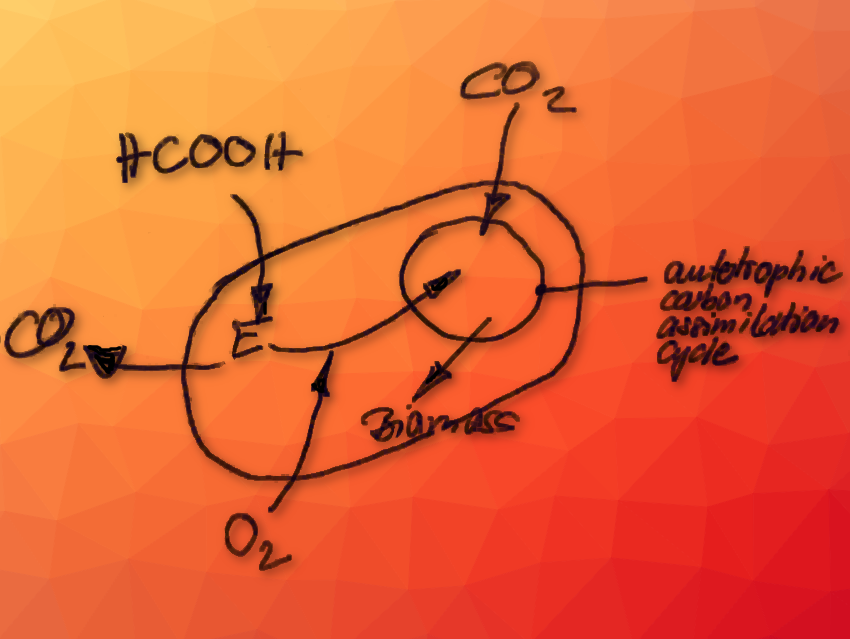The living world is divided into autotrophs that convert CO2 into biomass and heterotrophs that consume organic compounds. Escherichia coli is a heterotrophic bacterium that grows on glucose and produces CO2.
Ron Milo, Weizmann Institute of Science, Rehovot, Israel, and colleagues have used a mix of genetic engineering and lab evolution to create a strain of E. coli that uses CO2 as sole carbon source. In addition, these synthetic autotrophic organisms oxidize formate to get all necessary reducing power and energy (pictured): The fixation of CO2 occurs via an autotrophic carbon assimilation cycle. Formate is oxidized by a recombinant formate dehydrogenase (FDH) to produce CO2 and NADH. NADH provides the reducing power to drive carbon fixation and serves as the substrate for ATP generation via oxidative phosphorylation. The formate oxidation results in a net CO2 emission even under autotrophic conditions.
The conversion from heterotroph to full autotrophy occurred over laboratory timescales through expression of heterologous genes combined with metabolic rewiring and laboratory evolution. Successive generations of modified E. coli were cultured at low glucose and very high CO2 concentrations (250 times those in Earth’s atmosphere). About 200 days later, the first bacteria could use CO2 as their only carbon source. 300 days later, these bacteria grew faster in the lab conditions than those that could not consume CO2.
The synthetically autotrophic E. coli can still grow on sugar and prefer sugar over CO2 when given the choice. When grown in a 10 % CO2 atmosphere, they divide every 18 hours instead of every 20 minutes. They cannot grow without sugar at lower CO2 levels such as atmospheric levels. Therefore, the next steps include making the synthetically autotrophic E. coli grow faster and live on lower CO2 levels. In addition, the researchers want to understand how E. coli managed to grow on CO2. 11 genes seem to be responsible for the change.
According to the researchers, in the future, formate would be produced electrochemically from CO2 by using a renewable energy source with negative greenhouse gas emissions. Formate could then be used as the feedstock for the biotechnological production of various chemicals using the synthetically autotrophic E. coli as the bioproduction platform.
- Conversion of Escherichia coli to Generate All Biomass Carbon from CO2,
Shmuel Gleizer, Roee Ben-Nissan, Yinon M. Bar-On, Niv Antonovsky, Elad Noor, Yehudit Zohar, Ghil Jona, Eyal Krieger, Melina Shamshoum, Arren Bar-Even, Ron Milo,
Cell 2019.
https://doi.org/10.1016/j.cell.2019.11.009




